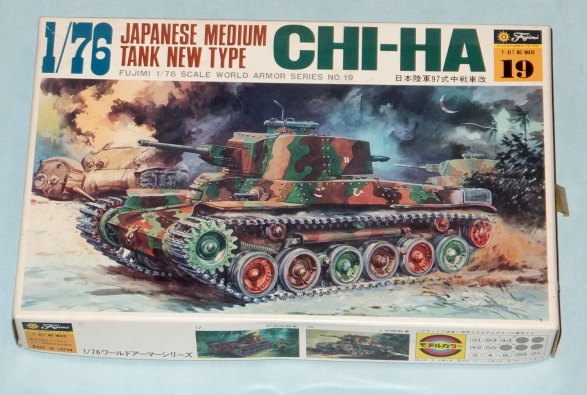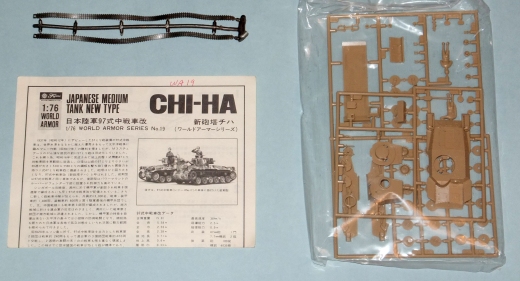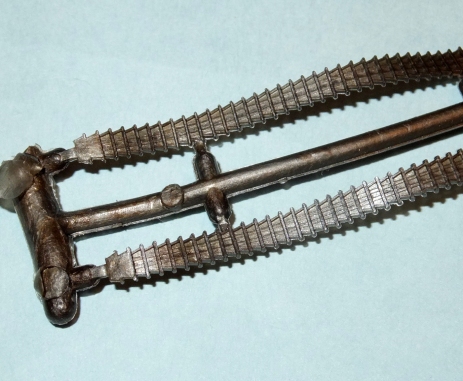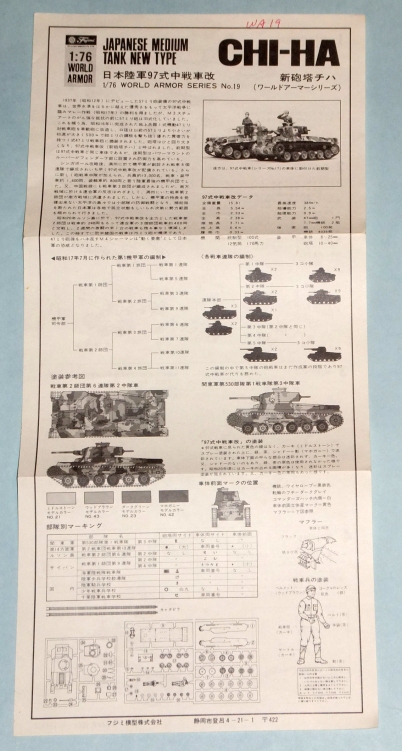They say that necessity is the mother of invention. If you want proof of this, all you have to do is trace the development of tanks through the mid-1930s through to the end of the Second World War. Before the war, there was a strong bent towards creating light and medium tanks. These machines were designed either for skirmishing or recon. Armament was not very heavy, nor was armour. The vehicles were small and fairly light. This was true around the world, by and large.
As the war in Europe dragged on, though, tank design philosophy changed rapidly and radically. Tanks grew ever heavier, and became better armed and armoured. Compare the Germans’ Panzer II, armed with only a 20mm cannon (!) to the last models of Koenigstiger and Panther tanks, armed with 88mm guns and armour so heavy that the 20mm cannons of the Panzer II wouldn’t even scratch it. Of course, the Soviet development of the T-34 is well known, and the American Sherman, while not a great tank, definitely followed the trend. In its “Firefly” form, the Sherman was a very powerful tank, and one of the only ones that could effectively deal with the heavily armoured German tanks one-on-one.
It seems, at first, that only the Italians missed out on this armoured revolution. Their tanks were, actually, non-existent. They seemed to take no heed of German or Allied developments, fielding only pathetic excuses for tankettes and lightly-armoured tank destroyers for the most part. Being neighbours to their German allies, you’d think that something would rub off, but it really didn’t seem to.
Half a world away, though, Germany’s other Ally, Imperial Japan, faced a totally different set of “necessities” for their armoured forces. By and large, the Japanese weren’t facing armoured opposition, and their tanks and armoured fighting vehicles (I use “armoured” loosely) were somewhat different to those of Europe, even as their war dragged on. Japan made use mostly of light and medium tanks; against villages and foreign “colonial” forces, these were often good enough. Still, the invasion of Manchuria had shown that their existing tanks were not fast enough to keep up to motorized infantry, and in 1937, a new medium thank, the Type 97 Chi-Ha was put into production.
However, after fighting the Russians in 1937, it was found that this new tank was inadequate. The Japanese tanks had a two-man turret and a low velocity 57mm gun. Apparently, the Russians BT-5 and BT-7 tanks could out range them, and losses were rather heavy. To correct this, a new turret was created, with a three man crew and a higher-powered 47mm gun. Yeah, you read that right. The size of the round was smaller, but the power of the gun was much higher due to better velocity. This new vehicle, known as the Type 97 Kai (Kai means “modified” in Japanese, and is a frequently-seen modifier for many kinds of Japanese equipment, to this day) or “Shinhoto” (literally “new turret”, apparently) Chi-Ha, was fielded from 1942 forward. Still, it only remained in production until the end of 1943.
While the Shinhoto Chi-Ha was a step up over the original design, it doesn’t take much to see that, compared to Western tanks, it is little more than an annoyance. It was proven to be superior to the Stuart light tank during fighting on Corregidor in 1942, but that was about the most it could do. Against even early Shermans it was hopelessly outclassed, and it had to hit the heavier American tanks from the side or behind to stand a chance of knocking it out. Given the terrain of the many Pacific islands and the fact that Japanese tanks were often dug in, the effectiveness of the Chi-Ha in the face of improving American armour was very little. Now, imagine how it would have fared against the Russian T-34…
Because the Chi-Ha is not well known in the West, and because it wasn’t really a spectacular fighting vehicle in the first place, it’s not a tank that has been kitted all that often. It doesn’t really grab the attention that Tigers and Panthers do. However, it’s a very cool tank to have a kit of, especially so you can compare it to some of it’s almost infinitely superior contemporaries. Thus, I was very happy to find the Fujimi 1/76 Chi-Ha at a model show. This is an old kit, but it’s in scale to my beloved Matchbox armour kits, so I had to pick it up. Let’s see if the plastic version is better than the real thing, shall we?
The Box:
Like many older Japanese kits, the Fujimi Chi-Ha kit has very dynamic, exciting and almost viscerally weighty box art. Even though the box is not large, the art takes up most of the lid, and that means there’s still a good chance for a nice piece of work to be displayed. In this case, the box art shows a pair of “New Type” (i.e. Shinhoto) Chi-Has on the attack. At first, it appears to be daylight, since there is a lot of the yellow end of the spectrum at the left of the box. However, a closer look reveals a crescent moon near the top right, indicating that this is a night/dusk or dawn action, and that the lighter colour is only the firelight of the burning enemy machines.
The Chi-Ha itself is beautifully represented in its complex three-colour cammo scheme, consisting of a brownish red, goldish-yellow/tan and fairly vibrant teal-kissed green. The rivet detail is well drawn in, as are things like tow hooks, handles and the mesh cover on the exhaust mufflers. Oddly, especially since this seems to be a night attack, the headlight is missing in the drawing; it should be literally front and center, but there’s no sign of it! The tank is on the move, as the dirt, thrown from the tank’s tracks, indicates. However, the tank is not firing, and neither defensive machine gun is hammering away either. Thus, it seems like this art shows the Chi-Has on the advance, having already dealt a deathblow to the invading enemy.
The box art is, as I said, very visceral. It looks heavy, like it physically would weigh a lot. The colour pallet is made of a lot of earth tones, thanks to the cammo scheme, and the largely dark backgrounds add weight too. The smoke and fire effects are also well drawn in a very period manner. One thing I do find interesting is the level of jingoism attached to the box art.
It was normal in the ‘60s for the Japanese to show Japanese subjects triumphing over Allied machines. LS kits were great for this; the Ki-109’s first issue has a B-29 breaking up in flames behind it. However, I thought that this practice had been toned down by the time this kit was made (1975). Well, I was wrong, since this box art shows the two Chi-Has smashing their way through some kind of enemy line, and there’s a very knocked out Sherman ablaze on the right side. In fact, the main subject somewhat frames the burning M4, and the gun points to it, if not at it. The implications are clear, but it’s more funny, than anything, to me. To knock out a Sherman, the Type 97-Kai would have had to attack from behind or the side, and even then the amount of destruction, with the turret on the Sherman having come dislodged from the hull, could scarcely be expected. It’s a case of somewhat wishful thinking, I feel. It does make for an awesome bit of art, even if it’s not grounded entirely in reality!

This drawing makes it look mean, but the chances of a Chi-Ha knocking the turret off a Sherman are pretty low. Ridiculously low, actually…
On the one side of the box are cross-sells for the other two kits in the series; an early Chi-Ha with the 57mm gun and the 75mm gun-equipped tank destroyer version (which I did manage to pick up, too!) There’s also some kind of target symbol and a bunch of circles with numbers in them. I don’t know, but I assume it’s some kind of paint list? On the other side is a three view (Front, back, side) of the tank. A top view would have been nice…

This is the paint plan for the Chi-Ha; it doesn’t really match the box art does it? Top view, anyone? Anyone?

These are other versions of the Type-97 that Fujimi makes: one is the old turret version (No. 17) while the tank destroyer Ho-Ni is the other (18).
The box is quite sturdy, especially for its age, and it is a top-opening affair.
The Kit:
While the Fujimi kit is the same scale as the Matchbox kits I have, it’s immediately apparent upon opening the lid that this kit is NOT a Matchbox. First, and foremost, there’s no mini-diorama base for the Chi-Ha. That means that when done, this little guy will just have to sit out on a shelf all on his lonesome, with no built-in context. Also, the kit is moulded only in one colour; beige. Unlike Matchbox kits that gave you two colours (for what it was worth), the Fujimi tanks only come in one colour. This isn’t a big deal, but it’s just interesting to notice.
On top of the two sprues of parts, there is a set of tracks. It’s no surprise, given the age and complexity level of the kit that the tracks are the old, and oft-reviled, “rubber band” type. Looking closely at the parts, one can get a feel for the detail and fineness of this kit. Remember, this is 1/76, and I wasn’t expecting anything as good as the Matchbox kits I was used to. Well, if anything, this kit is even BETTER than the Matchbox kits! The detail is supremely fine, and all the road wheels, sprockets and body panels are well-detailed. The suspension on these tanks is pretty simple, and it is reproduced well in this model.

This is what’s in the box. It’s not a lot, but it’s a small kit of a simple vehicle, and what’s there suffices nicely.
In fact, it seems like half of the parts in this kit are road wheels! Because there are six sets of double bogeys, and three return rollers, a drive sprocket and an idler on each side, the number of “round bits” is high. These are all beautifully moulded, some with holes in them, and have fine rivet detail on them too. The detail does fall down a bit at the rear of the tank, though. The exhaust mufflers are not moulded as being protected by mesh; they look solid! This is a bit of a disappointment, because the rest of the kit, including the rubber band tracks, looks great!

Here you can get a feel for some of the detail on the hull. It’s very good. The dark spots are bits of dust/dirt.

Even though they’re just old-school rubber band tracks, the detail on them is good enough that they should come out looking half decent, I think.
The only other issue could be that the two defensive machine guns (one in the bow, one in the rear of the turret) lack all detail; they are literally analogous to broomsticks in a blob of pudding. The main gun is also solid; there’s no muzzle moulded in. Thus, a good modeller will have to drill the barrel out to make things look more believable! Still, given the scale of the tank we’re talking about, and how small it is in real life, this isn’t bad. I’ve seen worse on larger tanks, so kudos to Fujimi for keeping the faults to a minimum.
Instructions:
The instruction sheet for the Chi-Ha is fairly simple. There’s not a lot to the tank to start with, so it’s not a very complex model to assemble. The drawings are clear and make it easy to see what goes where. There are even part numbers, unlike the unforgivable piece of slag that is the Arii Wirbelwind! I guess that means that there are good and bad Japanese tank kits! Thank goodness this is one of the good ones.
The instructions show using a heated screwdriver blade to melt the tracks together; the tracks are held by a “post through hole” system, unlike Matchbox’s more advanced “sectional slip-though” method, which is still the most ingenious methods I’ve seen. I personally would discourage the use of heated tools for holding the tracks; based on prior experience, I’d just go with good old fashioned tacky glue and a stretching unit to keep the track under tension, until the glue dried. There’s no information in English on the instructions, so if you want info on colours and the like, the Internet is going to be your friend.

The build looks simple, and the kit isn’t too fiddly to make it annoying. Great for any builder, I’d say!
The instructions’ reverse give a lot of information that most of us won’t be able to use. There’s something of a history write-up, I suspect, as well as a lesson in how the Japanese organized their armoured formations. There’s also a chart of some kind, but none of it is of any use to non-Japanese speakers. Remember, this kit was made in ’75, waaaay before the Japanese thought of, or gave two rats’ patoots, about export markets! (Heck, it took until the Re/100 Bawoo to get a Japanese-issue Gundam kit with English on the box write-ups, and those didn’t get made until late 2016!)

Yeah… what he said. Well, maybe. I can’t read any of this, but I’m sure it’s interesting and helpful. If you can read it, let me know if I’m right!
This kit of mine came with no decals, although some markings are shown in the side elevations. No loss to my eyes.
Conclusions:
When it comes to tank kits, I like them small, relatively detailed, simple and fun. That’s why I go with 1/76 kits. There’s a good variety of subjects and they take up very little shelf space. I am, of course, a sucker for any Matchbox armour, but I’m always willing to look at other (non-Airfix) sources too. Some, like Arii, are a miss (to put it lightly), while others, like Fujimi, seem to be pretty nice indeed!
I can recommend this kit to nearly anyone. Even if you’ve never built a tank before, I don’t think this little guy is going to cause you much grief. The suspension is largely moulded in and self-aligning, so there shouldn’t be a problem there. The only issue could be with some of the very small parts, like the headlight and machine guns. Still, it’s not too much for an even slightly experienced builder to handle with the right knives and tweezers.
If you’re a hardcore armour builder, there’s lots of nice detail on this kit to go to town on, and I can see some interesting dioramas that could be made to incorporate this kit with some jungle foliage, rivers or dugout positions. The tracks, while rubber bands, are nicely moulded, and there’s no flash anywhere on this kit, so cleanup is minimal. This is a Godsend no matter what experience level you’re at.
Sure, the Shinhoto Chi-Ha isn’t the world’s most successful, or even elegant (or cool-looking) tank, but it’s an interesting counterpoint to some of the more lethal armour fielded by Japan’s contemporaries. For that alone, it’s a neat thing to have in a collection. Since this kit is nice and small, well-detailed and likely a quick-build, there’s really no reason not to grab one if you see it. If nothing else, it could serve as a great way to knock you out of an AMS (advanced modeller syndrome) rut or try some new techniques!
